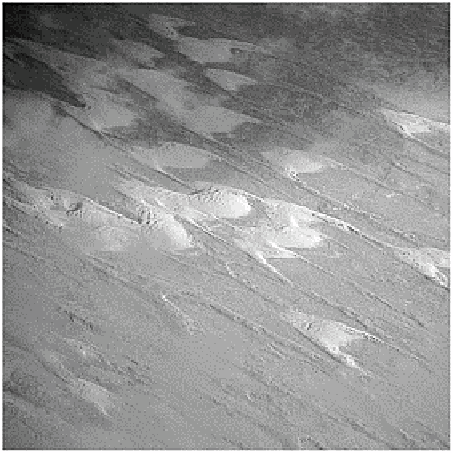Environmental Engineering Reference
In-Depth Information
Individual
parabolic dunes
form at
blow
-
outs
in transverse dunes where the windward
slope experiences accelerated erosion and breaches the dune crest or, conversely, receives
a diminished onward supply. Nonuniform motion of transverse crests may superimpose
barchanoid
(barchan-like) or parabolic elements (Plate 16.3). Longitudinal dunes
subjected to a diverse range of secondary wind directions acquire star-shaped patterns,
known as
rhourds
(Figure 16.2).
COASTAL DUNES
Coastal dunes depend for their formation and nourishment on the predominance of
effective, onshore winds and deflation of sustained sand supplies in the backshore zone.
Free-draining sands and vigorous coastal air streams create physiological drought even in
humid climates, as their occurrence in mid to high latitudes and more stormy belts shows.
The windward edge of the backshore behind a broad beach is susceptible to deflation
through onshore sand movement, regular desiccation and minimal vegetation cover.
Thereafter, the dune system is dependent on the development of biogeomorphic
processes. Sand would become dispersed as a thin, amorphous layer across the hinterland
in the absence of plants and active plant succession.
Plate 16.3
Barchanoid dunes formed by sand deflated from
the bajada and playa system shown in Plate 16.1.
Photo: Ken Addison.
The dune landsystem is mobile until wholly stabilized by woodland or the cessation of
sand supply but various forms and degrees of stability characterize different zones. A
psammosere
or pioneer community arrests sand movement along a line of embryonic

